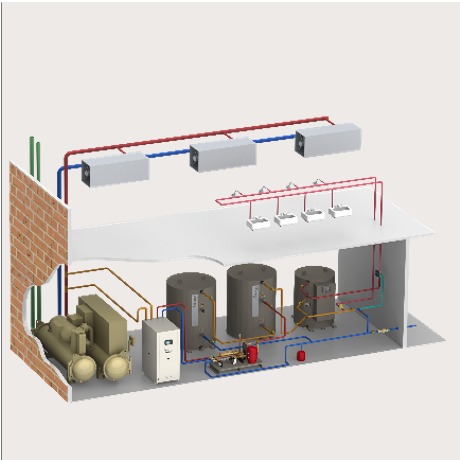 Carbon reduction in building design is critical to the lifestyle of our future generations. Most engineers and their owner clients understand the concerns and welcome opportunities to reduce their carbon footprint. The complete elimination of carbon emissions in commercial and institutional building HVAC and plumbing system has a set of consequences that become hard to accept.
Carbon reduction in building design is critical to the lifestyle of our future generations. Most engineers and their owner clients understand the concerns and welcome opportunities to reduce their carbon footprint. The complete elimination of carbon emissions in commercial and institutional building HVAC and plumbing system has a set of consequences that become hard to accept.
Decarbonization and Electrification
In a recent meeting, the speaker defined electrification as the process of “replacing technologies that use fossil fuels with alternative technologies that run on electricity.” When people in our industry start talking about this subject, the conversation jumps to electric boilers and water heaters. Electrification will be a topic of several R. L. Deppmann Monday Morning Minutes during the year.
Decarbonization was defined as, “Reducing the amount of carbon dioxide occurring as a result of power generation or consumption.” Architects and engineers can and do reduce the consumption by designing systems that have less heat loss or gain. They also employ equipment with better efficiencies.
Engaged owners can and do reduce consumption by limiting use. This may cause slight discomfort or restrict some activities, but the choices are made.
There is no legislation that I am aware of in Michigan and northern Ohio that requires engineers to reduce carbon emissions in buildings. Ann Arbor may be the closest but, when asked, there is nothing published at this time. For more information on greenhouse gas reduction targets by state, visit the State Climate Policy Maps from the Center for Climate and Energy Solutions. Any design that includes decarbonization or electrification is by choice of the owner and engineer as a team.
ASHRAE created a Task Force for Decarbonization in 2021. They are working on standards for buildings.
Building HVAC and Plumbing Carbon Elimination Without Regulation
Almost any design change to help save the planet will have some effect on the owner. The first cost of building construction may increase for the owner since some technologies are more expensive than traditional fossil fuel technologies. In most areas the cost of electricity per BTUH will be higher than gas. There may even be issues with the availability of electricity at peak times of the year. On the plus side, some technologies may reduce the utility bills, maintenance, and even repair costs. Any cost analysis may show longer paybacks than we normally deem acceptable. These choices are not being made as a cost reduction. These choices are being made to help reduce greenhouse gases.
The engineer, contractor, and owner should become a team when designing a system to reduce the carbon emissions without code requirements. The owner should understand the costs up front and be willing to accept those costs. Why design a system with good intentions only to find a value engineering (VE) option offered and accepted during the bids.
Have a Carbon Reduction Opportunity Ready for the Owner to Consider
Engineers and contractors in Michigan and Ohio might consider having a carbon reduction design option to offer their clients and customers. It shows responsibility and offers a consulting service for the owner – and best of all it helps to take better care of our planet for generations to come. The design cost for the engineer could be reduced if the solution is packaged and offered over and over.
There are choices for a reduction in carbon that are simpler than complete carbon elimination. The electrification of an eight million BTUH boiler plant may create a utility bill nightmare for the owner. That same eight million BTUH electric boiler plant will impact the power company too.
A pre-designed solution for the two million BTUH water heater load may be the easier option for the owner. An electric water heater solution will still increase the operating cost but might be acceptable to the owner. The option may be for a heat pump water heater solution. It will reduce the operating cost but increase the first cost in dollars and space required. Either way, a possible 20% reduction in carbon generating equipment is a great option to offer.
The next several R. L. Deppmann Monday Morning Minutes will offer thoughts to help you make your carbon reduction plan more than just a dream. We will highlight design guidelines to help you provide modern, technologically advanced solutions.



